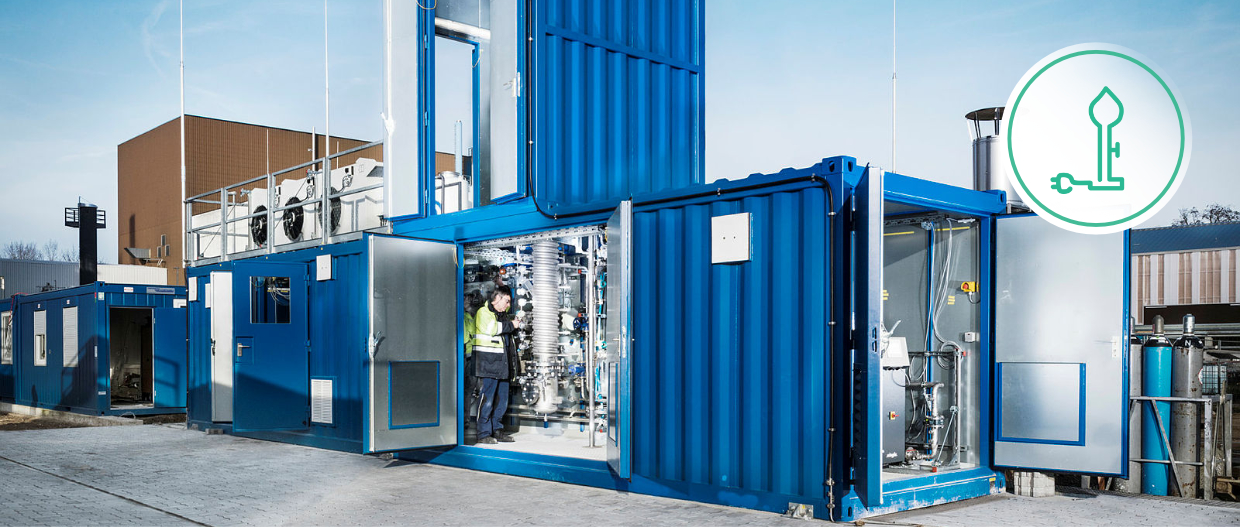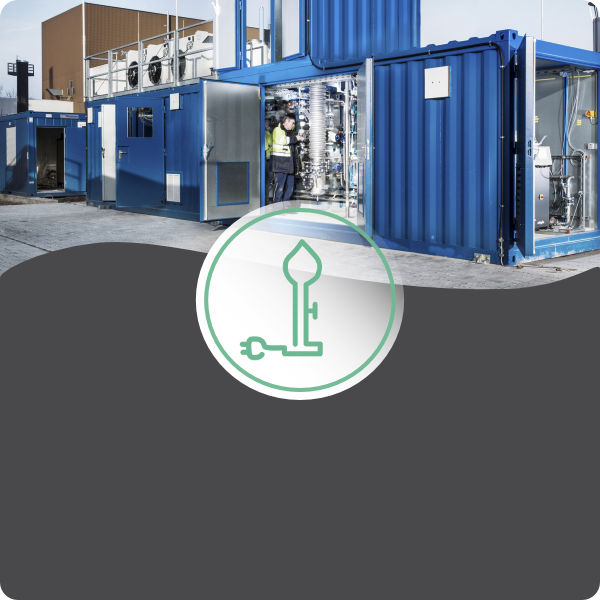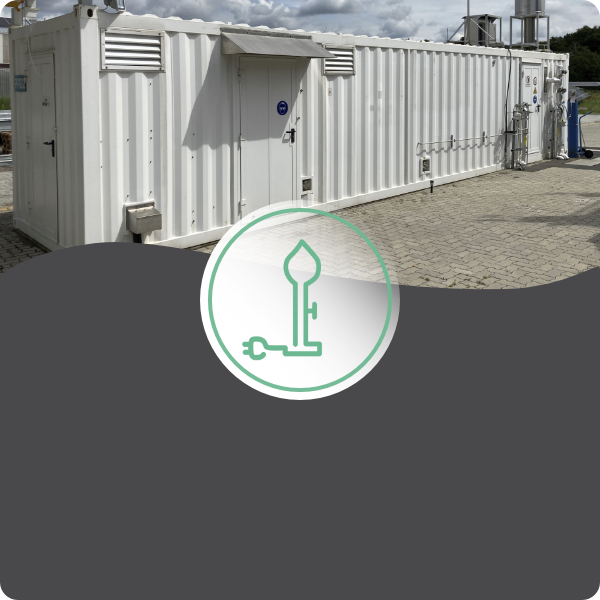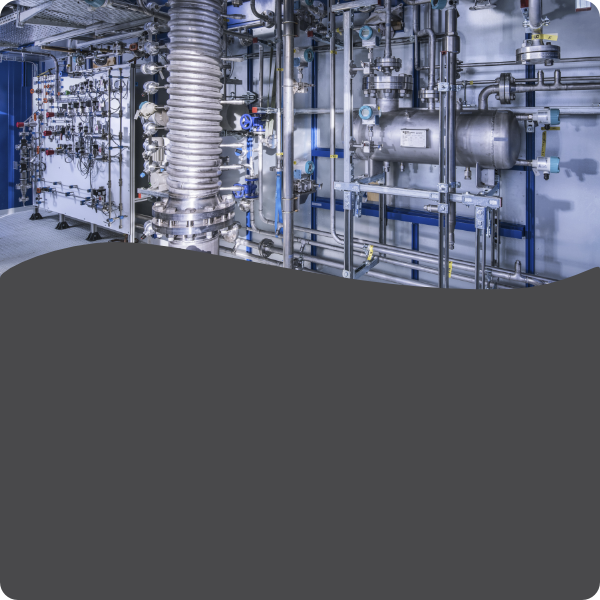In the Energy Lab 2.0, "green" hydrogen and carbon dioxide from the air are converted into methane. The process takes place in large container plants using honeycomb methanation and three-phase methanation.
In both forms of methanation, hydrogen from a water electrolysis is converted into methane, water and heat together with CO2 from the air or CO from biomass gasification.
As with the e-fuel production, renewable electrical energy is converted into climate-neutral molecular energy and stored. Methane has the advantage over hydrogen in that it can be easily fed into the existing natural gas grid and can therefore be distributed, stored and used without restriction. The methane produced can also be used as a fuel.
Honeycomb methanation
Honeycomb methanation uses a catalytically coated metallic honeycomb structure as a catalyst. Hydrogen and carbon dioxide and/or carbon monoxide flow through this structure and react on the modularly scalable surface of the structure to form methane and water. Honeycomb methanation is particularly characterized by its simple modular design and great robustness. In terms of load flexibility, it can be set between three-phase methanation and fixed-bed reactor concepts.
The plant is being extensively modernised as part of the BMBF lead project H2Mare. New reactors increase the capacity of the plant by a factor of 10 and enable the honeycombs to be changed quickly. Thus, the permanent development in the laboratory can be easily verified on a technically relevant scale. Furthermore, the plant will be operated in combination with a gas purification and liquefaction with LNG (Liquefied Naturals Gas) filling station in two additional plant containers to demonstrate the process chain of renewable LNG production as a whole.
Three-phase methanation
In three-phase methanation, the catalyst is suspended in a liquid, with reactive gases flowing through the mixture in the bubble column reactor. The waste heat generated during this methanation process can be efficiently used for other process steps. Since three-phase methanation can be switched on and off instantaneously, it is suitable as a load-flexible synthesis process for fluctuating electricity production.





 3.07
3.07


